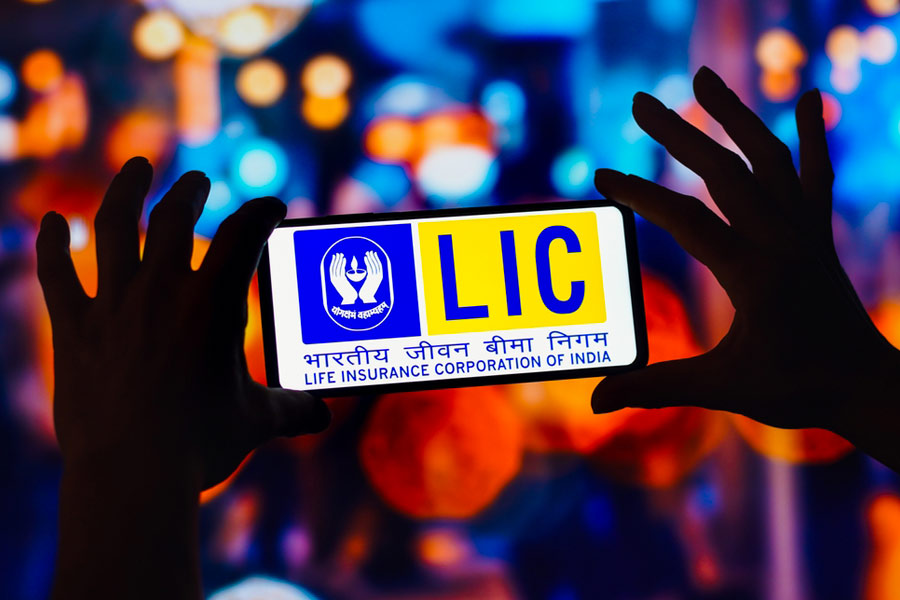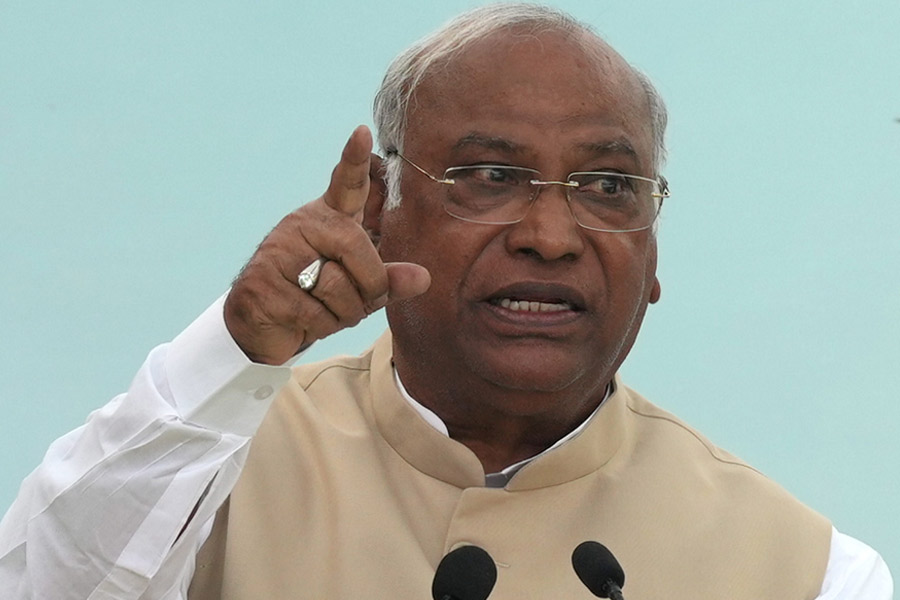|
|
That the mention of Santiniketan alone is no guarantee of refinement and high quality was evident from the exhibition (from September 15 to 21) organized at the Academy of Fine Arts by members of Nandan Santiniketan, who were all trained at some point of time between 1936 and 2008 at Kala Bhavan. There were about 49 participants, two of whom are well-known practitioners, namely Partha Pratim Deb and Ramananda Bandyopadhyay. Also included were the deceased artist and teacher, Dinkar Kowshik, and the art historian, Sovon Som.
The rest, going by this amateurishly put together exhibition with mostly works of a very poor quality, seem to be out of touch with the contemporary art scene in this country and are content with churning out countless paintings and sculptures based on their half-baked, dated and sentimental ideas of what constitutes good art. The result was a mishmash, with a few honourable exceptions, of clichéd and wrong-headed works, the kind that has been seen continuously ever since academic art training began in Calcutta, and is still reflected even in the photographs taken in this city. The bad lighting, grubby walls and heat in this gallery did not help matters.
Besides, there was no attempt at allowing some breathing space for the works. While paintings hogged the walls, the sculptures occupied most of the floor space. The medium, “tempera”, was misspelt with alarming consistency. As to drawing and the handling of painting, the least said about it the better. In the Holi scene borrowed from miniature paintings, the figures were warped, and the Ajanta fresco copy was of an inferior quality. And to think that a stylized form of the folk alpona, based on such ‘classical’ Indian motifs, had originated in Santiniketan itself, and it embellished not only floors but also leather work and batik.
Now for the honourable exceptions. The painting of flowers by Nani Gopal Ghosh, who passed out in 1950, was one of those rare ones. It had the simplicity and delicacy associated with the works of the masters who were his teachers. Tarit Bhattacharya’s (passed out in 1973) graphic print in black and white with its web of lines was suggestive of human forms but was closer to abstraction at the same time.
The sculptures matched the paintings in their awkwardness and lack of basic aesthetic values. The artists, if they can be called so, had picked up ideas at random from various well-known professionals and tried to give them shape without the minimum thought. Sad to say, even Janak Jhankar Narzary’s bronze piece was no exception. He was there in name only. The presence of these well-known participants did not in any way rescue this display of unskilled labour.











